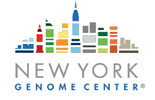Submitted by ja607 on
| Title | Biallelic and De Novo Variants in DONSON Reveal a Clinical Spectrum of Cell Cycle-opathies with Microcephaly, Dwarfism and Skeletal Abnormalities. |
| Publication Type | Journal Article |
| Year of Publication | 2019 |
| Authors | Karaca, E, Posey, JE, Bostwick, B, Liu, P, Gezdirici, A, Yesil, G, Akdemir, ZCoban, Bayram, Y, Harms, FL, Meinecke, P, Alawi, M, Bacino, CA, V Sutton, R, Kortüm, F, Lupski, JR |
| Journal | Am J Med Genet A |
| Volume | 179 |
| Issue | 10 |
| Pagination | 2056-2066 |
| Date Published | 2019 Oct |
| ISSN | 1552-4833 |
| Abstract | Co-occurrence of primordial dwarfism and microcephaly together with particular skeletal findings are seen in a wide range of Mendelian syndromes including microcephaly micromelia syndrome (MMS, OMIM 251230), microcephaly, short stature, and limb abnormalities (MISSLA, OMIM 617604), and microcephalic primordial dwarfisms (MPDs). Genes associated with these syndromes encode proteins that have crucial roles in DNA replication or in other critical steps of the cell cycle that link DNA replication to cell division. We identified four unrelated families with five affected individuals having biallelic or de novo variants in DONSON presenting with a core phenotype of severe short stature (z score T p.(Arg211Cys) variant had clinical features typical of Meier-Gorlin syndrome (MGS), while two siblings with compound heterozygous c.346delG p.(Asp116Ile*62) and c.1349A > G p.(Lys450Arg) variants presented with Seckel-like phenotype. We also identified a de novo c.683G > T p.(Trp228Leu) variant in DONSON in a patient with prominent micrognathia, short stature and hypoplastic femur and tibia, clinically diagnosed with Femoral-Facial syndrome (FFS, OMIM 134780). Biallelic variants in DONSON have been recently described in individuals with microcephalic dwarfism. These studies also demonstrated that DONSON has an essential conserved role in the cell cycle. Here we describe novel biallelic and de novo variants that are associated with MGS, Seckel-like phenotype and FFS, the last of which has not been associated with any disease gene to date. |
| DOI | 10.1002/ajmg.a.61315 |
| Alternate Journal | Am. J. Med. Genet. A |
| PubMed ID | 31407851 |
| Grant List | KO 4576/1-1 / / Deutsche Forschungsgemeinschaft / K08 HG008986 / HG / NHGRI NIH HHS / United States UM1 HG006542 / HG / NHGRI NIH HHS / United States R01 NS058529 / NS / NINDS NIH HHS / United States R35 NS105078 / NS / NINDS NIH HHS / United States K08 HG008986 / HG / NHGRI NIH HHS / United States UM1 HG006542 / HG / NHGRI NIH HHS / United States R01 NS058529 / NS / NINDS NIH HHS / United States R35 NS105078 / NS / NINDS NIH HHS / United States |




